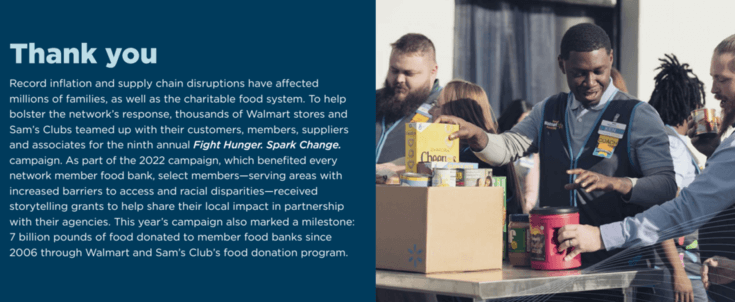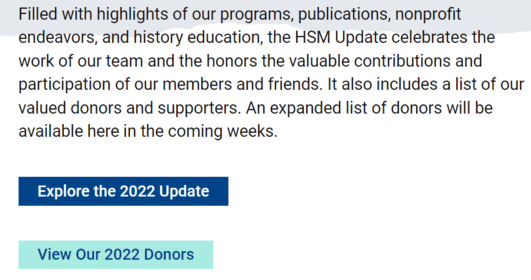An annual report is a must-have for reminding your current donors why they support your nonprofit organization. There are a variety of ways to present your organization’s purpose statement, accomplishments, and basic finances to your supporters, from a page on your nonprofit website to a video.
Regardless of the format you choose, an effective annual report is more than an opportunity to glance back at the year gone by. It’s a chance to deepen your donors’ engagement and understanding of your organization’s impact.
If you’re ready to take your nonprofit’s annual report to the next level, let’s discuss two strategies to keep in mind, along with some examples to inspire your efforts.
1. Transform your annual report into a gratitude or impact report.
This year, reposition your annual report as a showcase of your nonprofit’s impact, made possible by donors’ contributions, rather than a basic compilation of your activities and fundraising results. An effective annual report should focus on your most significant successes in the past year.
Some key elements of an optimized annual report include:
- Your nonprofit’s purpose
- Data to communicate impact
- A financial statement
- Compelling graphics and visuals
- Recognition of your loyal supporters
Additionally, go one step further in transforming your annual report by giving it a unique name that communicates its purpose. Here are a few examples where organizations have renamed their annual reports “gratitude” or “impact” reports:
- Pride Foundation: “We call this our gratitude report. It is created with deep appreciation for all who make our work possible.”
- Feeding America: Annual Report | A Bold Aspiration – Gratitude Report
- Hazelden Betty Ford Foundation: Impact Report | Life-Changing Stories
- RAD Advocates: Annual Gratitude Report
Use these effective annual reports to guide you in renaming and reformatting your own. Like the Pride Foundation, consider describing the purpose of changing your annual report’s name to emphasize that you’re centering the focus on your supporters.
2. Highlight impact in your annual report.
Ultimately, your nonprofit’s annual report should encourage your donors by sharing past victories, keeping them invested in your future initiatives. Take your entire supporter base, from major donors to peer fundraisers, into account as you shape your content.
Focus on impact in your next annual report by keeping these best practices in mind:
Determine what resonates with donors
Your annual report is an excellent opportunity to demonstrate your organization’s purpose and impact to supporters. In order to maximize your results, determine what motivates your donors to give and why they choose to engage with your cause.
Evaluate the information collected in your donor database to identify common interests and values among your supporters. Based on this data, create an annual report that will appeal to as many donors as possible.
For example, if a specific initiative received more support than your other projects, you might open your annual report with an update on that project. To aid your efforts, send out regular surveys for feedback to delve deeper into your supporters’ relationships with your nonprofit.
Strategize your annual report content
Be specific and direct in your annual report by focusing on your projects’ impact rather than the nitty-gritty operational details. Communicate your nonprofit’s fundraising results for the year by pulling data from your donor management system, such as boosts in donations and recurring giving enrollment. This demonstrates to donors that they’re among a large group of people invested in your organization.
Draw clear connections between supporters’ gifts and your organization’s accomplishments, emphasizing how your donors contributed to your nonprofit’s overall impact. Then, extend those connections into the future for anticipated victories to keep your donors engaged moving forward.
Most importantly, remember to thank your donors for making your impact possible. For instance, consider featuring donor and constituent:
- Photos
- Stories
- Testimonials

For example, Feeding America’s Gratitude Report demonstrates how these elements add a personal touch to an annual report, enabling readers to emotionally connect with your nonprofit’s work and impact. After all, visuals and stories are what make facts and data more memorable and compelling.
Trim down your annual report to the essentials
Retain your readers’ attention throughout your annual report by covering only the essentials for communicating your impact and inspiring your supporters. Comprehensive financial data, for instance, does not necessarily have to be shared in your report. In fact, many organizations find it more effective to provide a financial summary statement or infographic in their report and link to a more detailed resource on finances for those interested.
The Trevor Project, for example, provides an infographic overview of financials in its annual report, while including a link to its full financial statements for readers looking for additional details.
Additionally, many annual reports commonly feature encyclopedic donor lists. To make this information easy to read through, use your donor data to create segmented lists for new donors, major donors, or donors to a recent campaign. To ensure that you recognize all of your previous year’s donors, compile their names into a separate resource and link to it alongside your report. An added benefit is that these lists are much easier to add to and correct.
For instance, the Historical Society of Michigan’s website includes a link to its full list of donors beneath a link to its annual report.

Inspiring supporters with your dynamic annual report
While your nonprofit’s annual report is about showcasing your accomplishments and impact from the previous year, remember to turn your supporters’ attention to the positive change they can power in the future as well. Include a section in your report notifying readers of ways they can get involved moving forward, from volunteering to upcoming fundraisers to matching gifts. This will set your nonprofit up for more accomplishments to share in your next annual report.




